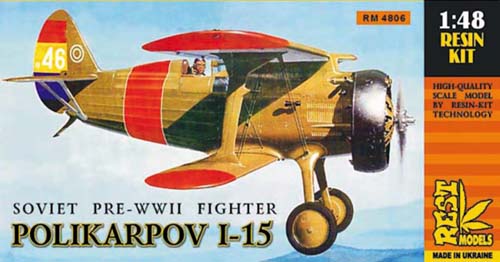The Polikarpov Fighters
Today, an airplane in the shifting skies of war. The University of Houston's College of Engineering presents this series about the machines that make our civilization run, and the people whose ingenuity created them.
Here's a photo of squat biplane -- a fighter plane -- with a swastika insignia. That seems odd. WW-II fighter planes were low-winged monoplanes like Spitfires, Mustangs, or Messerschmitts. It gets even stranger when we learn that this Swastika-ed airplane is the Russian-built Polikarpov I-152.
Some history here: Two months after WW-II began in 1939, Russian troops invaded Finland. It was supposed to be a cakewalk, but Finnish ski troops mounted a ferocious guerilla resistance that halted the Red Army. They also captured, and used, five I-152s.
Still, Finland lost a tenth of her land. So, when Germany invaded the Soviet Union, they created a Northern Front by helping Finland try reclaim its territory. It was a deal with the Devil. Today, Finns call that The Continuation War, while Russians see it as one more front in their huge war with Germany. In the end, little Finland lost 60,000 soldiers; and failed to get her land back.
Now, that airplane: Stalin told his designer, Polikarpov, to produce a fighter as part of the 1928 five-year plan. The monoplane had only begun to challenge traditional biplane fighters. Polikarpov did build a monoplane, but he cautiously settled on the known biplane form -- one that took no chances with five-year plans.
But the Soviet industrial infrastructure was far from ready to mass-produce airplanes and the five-year plan fell terribly short. So Stalin threw Polikarpov and other designers into the gulags. It was there they had to finish the airplane.
Finally, the fighter had gone through its revisions and been put into production. Then (before Finland) another war: In 1936 -- civil war in Spain between communist-supported Republicans and Franco's Nationalists. Germany sided with the Nationalists and Russia with the communists. Each threw its airplanes into the fight.
That's how our solid little biplane, our relic of another age, became entangled in Spain's war. At first it did rather well against older German planes. Then Germany introduced its sleek Messerschmitt 109 and the Spanish communists were doomed. The fascists won in the end.
Stalin had bet on the wrong horse. Polikarpov's biplanes were robust and well-built, but biplanes nonetheless. At every stage they were a hundred miles an hour slower than the monoplanes shooting at them. Yet they were still a Soviet staple in the middle of WW-II. By then, they'd fought in Spain, Mongolia, Finland, and Central Europe. The Chinese had used them against the Japanese.
For me, Polikarpov's biplanes reflect the era of the Soviet Union itself. They were born of Stalin's reign of fear -- a risk-averse design where it was suicide for an engineer to reveal creative initiative. Yet these machines were strong and durable under hardship in every climate. And they carried equally hardy heroes to their death amid the confusion of alliances that're part of any war.
I'm John Lienhard, at the University of Houston, where we're interested in the way inventive minds work.
H-H. Stapfer, Polikarpov Fighters in Action. Pt. 1 (color by Don Greer, Illustrations by Joe Sewell) (Carrollton, TX: Squadron/Signal Publications, Inc., 1995), No. 175.
Or you might purchase the kit for the Polikarpov I-15 from REST Models! (Illustration below.)
(Polikarpov's Monoplane, the I-16, is actually the better-known of his fighter planes today, even though his biplanes were his mainstay.)
